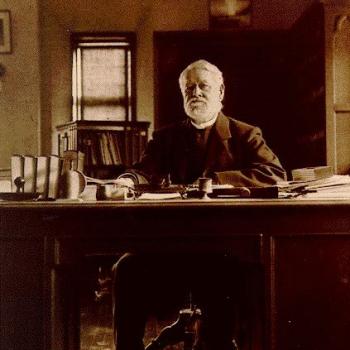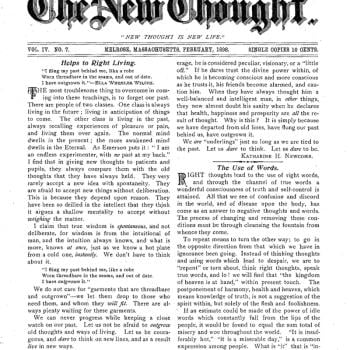Christians are required to believe that Jesus Christ rose from the dead on the third day. They are under no obligation to believe anything whatever about the actual chronology of the reported Resurrection appearances, which might have differed substantially from what we often hear in sermons around Eastertime. I have argued that the earliest stories of a Resurrection appearance happened much later than the third day of the Easter story, and they happened in Galilee, not Jerusalem. I stress appearance: that is, as distinct from accounts of proclamations of Resurrection, or reports of an empty tomb. If that is close to correct, such an interpretation says much about how to read the various gospels.
I have been posting recently about early Resurrection accounts, for which the key text is found in Paul’s words in 1 Corinthians, written around 50. In 1 Cor. 15: 3-7, he writes (KJV),
And that he was buried, and that he rose again the third day according to the scriptures: And that he was seen of Cephas, then of the twelve: After that, he was seen of above five hundred brethren at once; of whom the greater part remain unto this present, but some are fallen asleep. After that, he was seen of James; then of all the apostles.
I have suggested that the first recorded appearance – the basis of the whole faith – was associated with Cephas/Peter, and occurred at the Sea of Galilee, rather than to Mary Magdalene in the garden. And I am very far from being the first person to suggest that.
Assume for the sake of argument that what I am saying here about that lakeside scene is correct, that this was the first appearance to Peter. This has major implications for the chronology of the story. Paul’s “creed” in Corinthians makes absolutely no reference to chronology, beyond the fact of Jesus rising on the third day. If the actual appearance takes place in Galilee, how long after the crucifixion would that have been? We have to imagine the apostles fleeing Jerusalem, returning home, and sorting themselves out sufficiently to resume fishing. Are we talking weeks or months here? Even years? We assuredly are not talking three days.
Nor, of course, does the Corinthians text say anything about location.
I have in the past talked of two traditions of Resurrection appearances, one early one centered in Galilee, one in Jerusalem, but increasingly, I don’t think that’s right. I think there was one tradition, in Galilee, and the Jerusalem stories emerged to fill what contemporaries felt was an embarrassing gap or conflict in the narrative.
I suspect that what has happened here is that early churches knew a story of Resurrection after three days, which they grounded in their readings of Hosea. Initially, though, they did not link that incident to any accounts of actual appearances by the risen Jesus at that time. But imagine the world of early preaching and debate with skeptics and critics of the new movement, and the pressure to prove that the Resurrection had happened on the third day. It would have seemed necessary that the fact should have been acknowledged by some contemporary witnesses, most obviously the women who went to tend Jesus’s body, and who discovered its absence. Over time, that story developed to include actual appearances at that time and place to confirm and prove that fact, and of necessity, that would have occurred in Jerusalem, at the site of burial. If the first appearances happened in Galilee, they happened considerably later.
But as the story evolved, it demanded a geographical shift in the location of the key characters. If the authors required both a resurrection proclamation and an appearance to the disciples on the “third day”, that more or less demanded that the disciples be depicted as remaining in Jerusalem for the appearances, and that the Galilee traditions be eroded or minimized. We see this trajectory in the successive gospels, which know about the original centrality of events in Galilee, but that story fitted increasingly poorly with the story as it was developing. Yet the Galilee story was too powerful, too strongly associated with the earliest disciples, to be purged altogether.
This actually offers us a useful criterion for assessing evidence. Statements associating the Resurrection appearances with Galilee are likely to be older (and perhaps more authentic) than those connecting the stories with Jerusalem. It is inconceivable that “Galilee ideas” would be developed later, to be grafted with some difficulty on the strong Jerusalem traditions. The stronger the Jerusalem link or context, the later the tradition.
If you track what happens to the Galilee tradition in successive gospels, you can actually see how how the chronology of the Resurrection appearances shifts unerringly to the third day, rather than weeks or months later. Mark presents the discovery of the tomb on the third day, with an angel meeting the women and prophesying an appearance in Galilee If Jesus is to “lead” the disciples into Galilee, that explicitly suggests that they are in Jerusalem on the third day, though they will later receive appearances in Galilee. As I have noted, Mark as we have it does not have a Resurrection appearance – although his text originally would have done.
Matthew 28 repays careful reading, to see how different traditions have been juxtaposed. Verses 5-10 have the Marcan prediction to the women of an appearance in Galilee; but two verses later, Jesus meets the women in Jerusalem, and says that he will meet the disciples in Galilee. This is strange if, according to verse 8, the women (in Jerusalem) ran to bring word to the disciples – who were presumably at that point in the same place, or nearby. Matthew later goes on to report the announced meeting with the disciples, at a mountain in Galilee. This looks like a classic case of rival traditions failing to mesh neatly, and the result is to say the least, confused.
Luke represents a still more advanced stage, where the Galilee tradition has all but vanished, or at least have been relocated to Judea. Luke has the angel announcing the resurrection, but citing “Galilee” only as the place where the living Jesus prophesied these events. In other words, the words recorded by his sources specifically mention “Galilee,” but Luke’s story forbids moving the action there. Indeed, the disciples are here depicted as still in Jerusalem, and Peter is one of those who runs to the sepulcher. There is then the appearance on the road to Emmaus; and the meeting with all the disciples in the Jerusalem house where they were staying. All the appearances seem to be set in this area, culminating in the Ascension from the Mount of Olives. This decisive move to Judea is essential for Luke’s purposes if Acts is to begin with the disciples properly established in Jerusalem.
I have already discussed John’s mixture of traditions in an earlier post.
In making these arguments, I face the dilemma of the proper limits of the historical enterprise. A historian should be very cautious indeed about venturing into such questions as to the nature of Resurrection, or how many angels were at the tomb – or indeed, to take my title here, “When and where did Peter see the risen Jesus?” But historians have every right to explore what early Christians believed about such things. They do that primarily by the close study of documents, by establishing chronologies, and by tracing the development of traditions as they are recorded and preserved. I can certainly offer an opinion about what the church believed about the nature and location of Peter’s experiences – about when and where they believed he had seen the Risen Jesus. And that is the case I am making.













